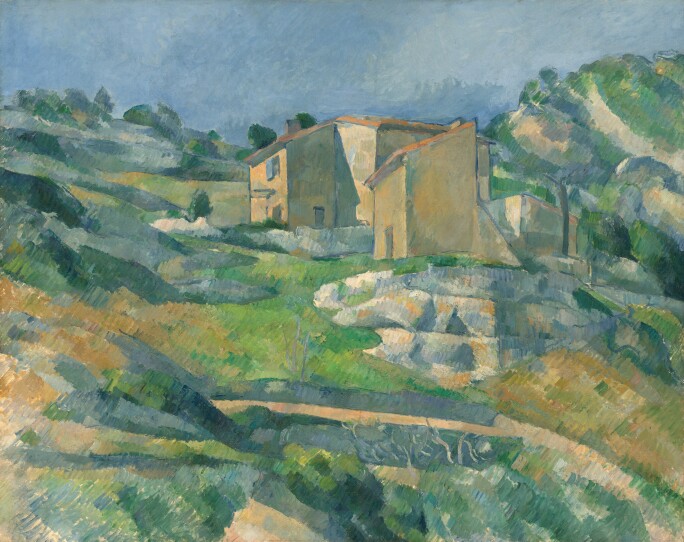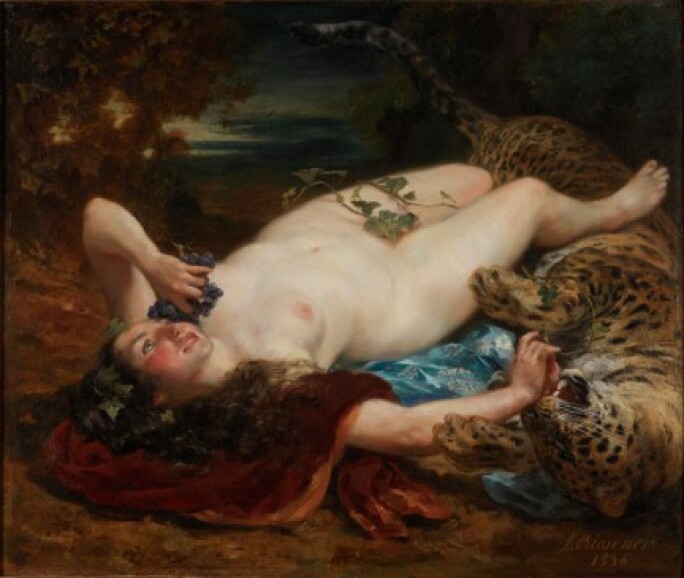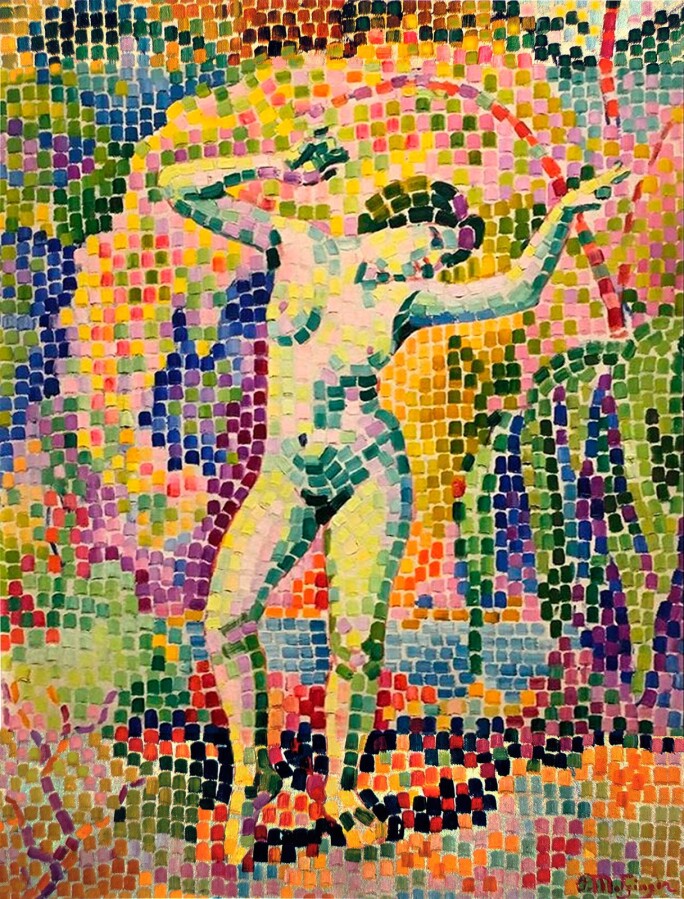I
n La Bacchante ou Nu allongé dans la campagne, André Lhote presents a mythological figure in languid repose against an Arcadian landscape. Though traditional in subject matter, Lhote portrays the figure with modern immediacy and chromatic finesse. Painted circa 1911, this major work illustrates the crucial transition in the artist’s work from his early Fauvist style to an adoption of Cubism.

Lhote was profoundly influenced by Paul Cézanne, who he considered to be the pioneer of the modern age, and Paul Gauguin, who’s joyful use of color and simplified shapes are evident in La Bacchante (see fig. 1). Arriving in Paris from Bordeaux in 1906, the young André Lhote paid witness to the seminal retrospective exhibitions of Paul Gauguin and Paul Cézanne, prominently displayed in the French capital. The presentation of the full artistic achievement of these two great pioneers of the modern age provided a source model for Lhote’s stylistic development, just as it did for fellow Cubist artists Pablo Picasso, Georges Braque and Juan Gris. The exposure to these models helped to develop Lhote’s works from a largely Fauvist style to one in which geometric patterns were used to distill forms from the natural world.

In the present work, the nymph-like follower of Bacchus, is rendered relaxed, her body sprawled and her cheeks flushed in an allusion to her drunken state. While this subject is oft rendered in academic painting (see fig. 2), Lhote depicts her with a frontal gaze that confronts the viewer through a single visible eye, while her body seems to vibrate with movement within the closely cropped frame. Lhote builds flat planes of color that fuse together to form the rounded contours of her body in a decidedly modern fashion.

The present work follow’s Lhote’s first solo exhibition at Galerie Druet held in 1910. In 1911, he presented works in a room adjoining the famed Salle 41, where Cubism famously made its first public appearance. By 1912 he had joined the Section d'Or group, exhibiting alongside champions including Gleizes, Villon, Duchamp, Metzinger, Picabia and De la Fresnaye. La Bacchante is a fine example of the new lyricism that Lhote injected into Cubism. While he exhibited with the Cubists through 1914 and he is often considered a member of the movement based on his theoretical conceptions of form, Lhote transcended the rigid constraints of traditional Cubism in order to develop a highly personal theoretical and distinctive style.